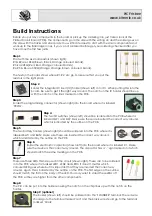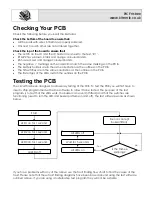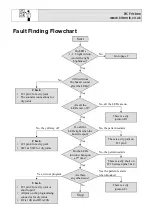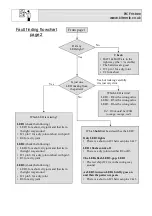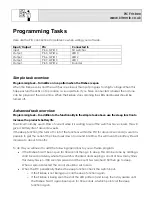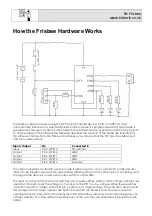
PIC Frisbee
www.kitronik.co.uk
Three of the outputs have been connected to LEDs. Between each of the PIC outputs and each of
the LEDs is a resistor. The purpose of these resistors is to limit (restrict) the flow of current into the LEDs.
This controls the brightness of the LED and prevents it from becoming damaged, which would
happen if no resistor was used. A 330
Ω
resistor has been used for this purpose.
The circuit has been designed so that a buzzer can be added. The type of buzzer used should not
have any drive circuitry. This means that it needs driving with square wave (alternating high low
voltage signal) to make it produce a tone. The frequency of the tone will be the same as that of the
square wave that is used to drive it. It is by varying this tone that the sounder can be used to play a
musical tune.
One other point worth noting is the processor clock. For any micro-controller to work it requires a clock
source. The micro-controller uses this clock so that it knows when to execute the next line of software.
Often these clocks are generated externally but in the chip used in this circuit the clock is built into the
chip itself. This is why it does not appear on the circuit diagram.
Why use a PIC micro-controller?
There are a number of advantages of using a micro-controller; some of these are outlined below:
•
Complex functionality can be produced a very low cost.
•
Circuit size can be very small for and still provide complex functionality.
•
It is very easy to make minor alterations to the function of the product.
o
For instance changing the tune that is played.
•
Flexibility. The circuit could easily be used for a completely different function by simply re-
writing the software.
•
Easy to develop and debug. Most software packages allow you to simulate the software while
it is being developed making it much more likely to work when used. It is also possible to break
the functionality down into small steps which is easier to get right then jumping straight to the
final design.


